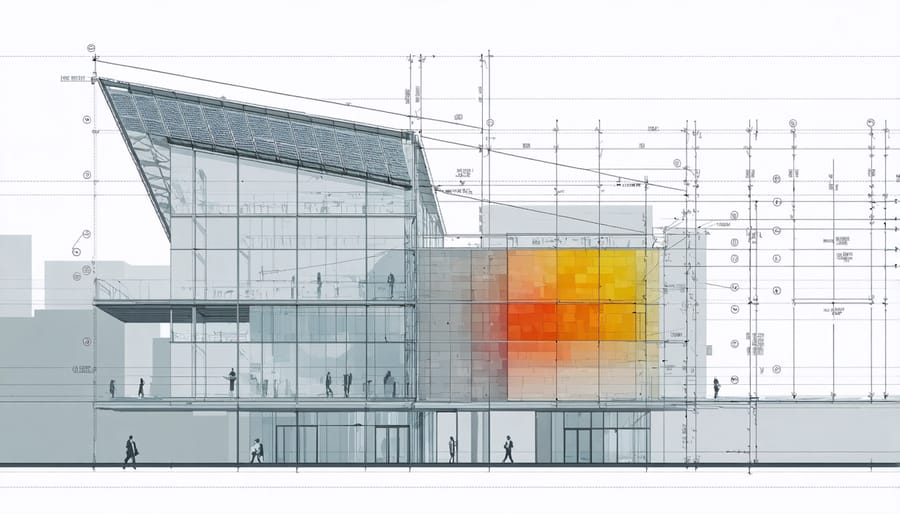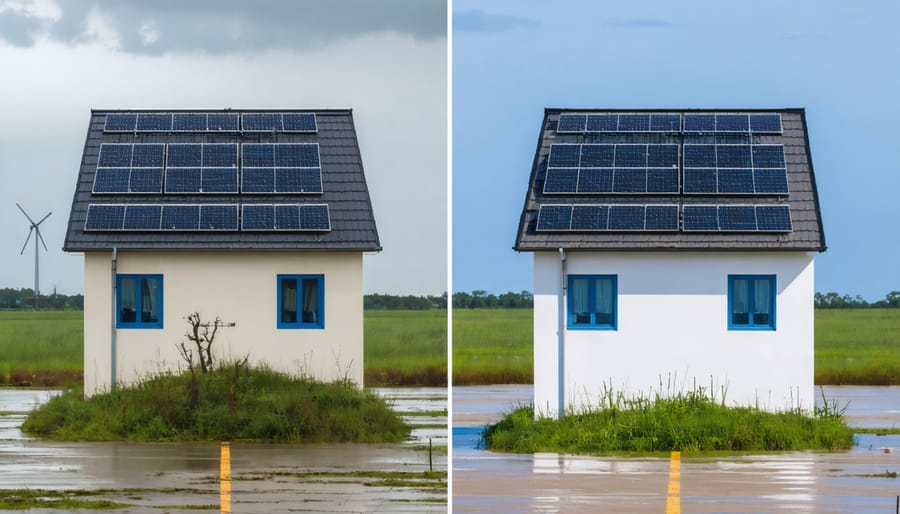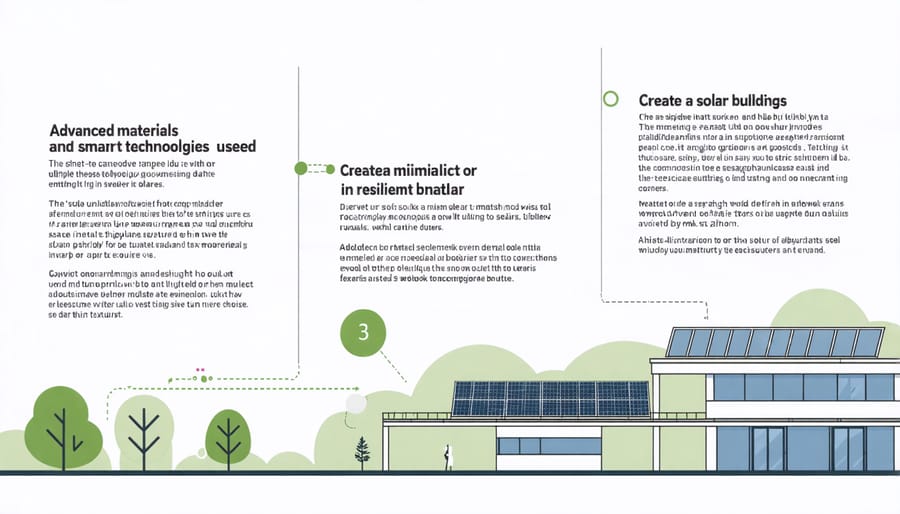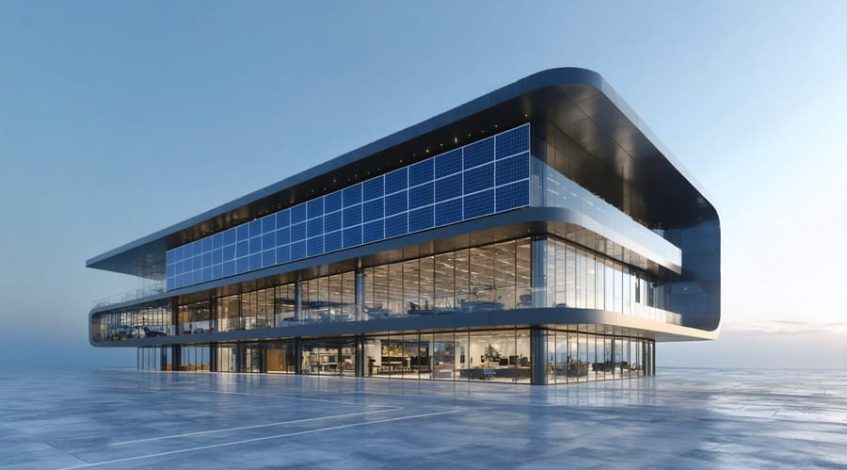In an era of increasing climate uncertainty and infrastructure challenges, resilient infrastructure has emerged as a cornerstone of sustainable urban development. Forward-thinking organizations are revolutionizing how we design, build, and maintain critical systems to withstand natural disasters, cyber threats, and operational disruptions while ensuring continuous service delivery.
Modern resilient infrastructure combines advanced materials science, predictive analytics, and adaptive engineering to create systems that not only survive catastrophic events but rapidly recover and adapt. From self-healing power grids to earthquake-resistant buildings and flood-resistant transportation networks, these innovations are reshaping how we approach infrastructure vulnerability and reliability.
The financial implications are compelling: every dollar invested in resilient infrastructure saves an average of $6 in future disaster recovery costs. For business leaders and facility managers, this represents both a strategic necessity and a significant opportunity to enhance operational continuity while reducing long-term risk exposure.
As cities and businesses worldwide face mounting environmental pressures, implementing resilient infrastructure solutions has become essential for maintaining competitive advantage and ensuring sustainable growth. This strategic approach to infrastructure development not only protects assets but also creates lasting value through enhanced reliability, reduced maintenance costs, and improved stakeholder confidence.
Core Elements of Solar-Integrated Disaster Resilient Architecture

Structural Reinforcement Strategies
Modern solar installations require robust structural reinforcement strategies to withstand extreme weather conditions while maintaining optimal performance. The integration of building-integrated solar panels with enhanced structural support systems has become increasingly important for long-term sustainability.
Key reinforcement techniques include the implementation of wind-resistant mounting systems featuring aerodynamic designs that reduce uplift forces. These systems typically employ heavy-duty aluminum rails and stainless steel components rated for high wind speeds up to 140 mph. Strategic ballasting methods distribute weight evenly across the installation, while specialized clamps and brackets secure panels firmly without compromising roof integrity.
Facilities in hurricane-prone regions benefit from additional reinforcement measures such as supplementary attachment points, enhanced edge protection, and impact-resistant panel materials. Advanced micro-racking systems provide improved load distribution and allow for individual panel adjustments, reducing stress on the overall structure during severe weather events.
For maximum protection, many installations now incorporate smart monitoring systems that automatically adjust panel angles during extreme weather conditions. This dynamic response capability, combined with proper structural reinforcement, significantly reduces the risk of damage while extending system longevity. Regular structural assessments and preventive maintenance ensure these reinforcement strategies continue to provide optimal protection throughout the installation’s lifecycle.
Grid-Independent Power Systems
Grid-independent power systems represent a critical component of resilient infrastructure, offering organizations the ability to maintain operations during grid outages and natural disasters. These systems typically combine renewable energy sources, such as solar panels and wind turbines, with advanced energy storage solutions and smart control systems.
At the core of grid independence is the integration of battery storage systems, which enable facilities to store excess energy generated during peak production periods for use during outages or high-demand times. Modern lithium-ion battery installations, coupled with sophisticated energy management systems, can provide reliable backup power for hours or even days, depending on the system’s capacity and facility requirements.
Microgrid technology further enhances grid independence by allowing facilities to operate autonomously from the main power grid when necessary. These systems automatically detect grid disruptions and seamlessly transition to island mode, ensuring continuous power supply to critical operations. Leading organizations have reported significant improvements in operational resilience and reduced downtime after implementing microgrid solutions.
Energy redundancy is achieved through the strategic combination of multiple power sources. For example, a manufacturing facility might integrate solar arrays with natural gas generators and battery storage, creating a robust power ecosystem that can withstand various disruption scenarios. This approach not only enhances reliability but also provides opportunities for peak shaving and demand response participation, offering substantial cost benefits beyond emergency preparedness.
Implementation in Commercial Buildings
Cost-Benefit Analysis
Investing in resilient infrastructure requires careful consideration of both initial costs and long-term returns. Studies show that every dollar spent on infrastructure resilience yields an average return of $4-7 in avoided disaster recovery costs. This compelling ROI makes resilient design an increasingly attractive proposition for forward-thinking organizations.
When analyzing solar energy economics and resilient infrastructure, several key financial benefits emerge. Initial implementation costs typically run 15-25% higher than traditional infrastructure, but this investment is offset by:
• Reduced maintenance and repair costs (30-40% lower over system lifetime)
• Decreased insurance premiums (up to 25% reduction)
• Enhanced operational continuity during extreme events
• Extended asset lifespan (25-30% longer than conventional systems)
• Lower energy costs through improved efficiency
Real-world examples demonstrate these benefits. The Port of Los Angeles implemented resilient infrastructure upgrades in 2018, resulting in a 45% reduction in weather-related downtime and $12 million in avoided losses during recent severe weather events. Similarly, a major data center in Miami recovered its resilience investment within three years through reduced cooling costs and improved operational efficiency.
The cost-benefit equation becomes even more favorable when considering secondary benefits:
• Increased property value
• Enhanced competitive advantage
• Improved stakeholder confidence
• Regulatory compliance preparedness
• Reduced carbon footprint
For most facilities, the break-even point occurs between 3-7 years, with accelerating returns thereafter. This timeline can be shortened through available government incentives, grants, and tax benefits designed to encourage resilient infrastructure adoption.
Regulatory Compliance and Incentives
Building codes and regulations play a crucial role in ensuring infrastructure resilience across different jurisdictions. In the United States, the International Building Code (IBC) and ASCE 7 standards establish minimum requirements for structural integrity and disaster resistance. These codes are regularly updated to incorporate lessons learned from natural disasters and emerging technological capabilities.
Many jurisdictions have adopted enhanced building codes that exceed basic requirements, particularly in areas prone to specific hazards. For example, Florida’s Miami-Dade County enforces strict wind resistance standards, while California maintains rigorous seismic requirements through its Building Standards Code.
Government incentives at federal, state, and local levels support the development of resilient infrastructure. The Federal Emergency Management Agency (FEMA) offers several grant programs, including the Building Resilient Infrastructure and Communities (BRIC) program, which provides funding for pre-disaster mitigation projects. The Department of Energy’s Better Buildings Initiative offers technical assistance and recognition for facilities that implement robust resilience measures.
Tax incentives are also available for businesses implementing resilient infrastructure solutions. The Investment Tax Credit (ITC) supports the installation of renewable energy systems with built-in resilience features, while accelerated depreciation allowances can improve the financial feasibility of infrastructure upgrades.
Local governments often provide additional incentives through property tax abatements, expedited permitting, and density bonuses for projects that incorporate resilient design elements. Some municipalities have established resilience overlay zones that offer specific incentives for hardening infrastructure within vulnerable areas.
Compliance with these regulations and participation in incentive programs requires careful documentation and regular auditing. Facility managers should maintain detailed records of resilience measures and regularly update their emergency response plans to ensure continued compliance and maximum benefit from available support programs.
Real-World Success Stories
Hurricane-Resistant Solar Installation
In 2022, the Atlantic Business Center in Miami demonstrated the effectiveness of hurricane-resistant solar installations when it maintained full power operations during Hurricane Ian. The 250,000-square-foot facility’s solar array, consisting of 1,200 reinforced panels, continued generating power despite sustained winds of 150 mph.
The installation features several key resilience elements that contributed to its success. The solar panels were mounted using a specialized racking system rated for Category 5 hurricane conditions, with each panel secured by industrial-grade clamps and reinforced mounting points. The system’s aerodynamic design minimizes wind uplift, while the panels themselves are constructed with impact-resistant tempered glass that can withstand debris strikes.
What sets this installation apart is its innovative microgrid configuration, which includes a 500kWh battery storage system and smart inverters. This setup allowed the facility to maintain critical operations during grid outages, saving an estimated $175,000 in potential business interruption costs during the hurricane period.
The project’s success has influenced local building codes and insurance requirements, with several neighboring facilities now implementing similar systems. The installation’s ROI has exceeded initial projections, with the added resilience factor contributing to a 15% reduction in insurance premiums and a three-year payback period on the additional hurricane-resistant features.

Emergency Response Center Design
Emergency Response Centers (ERCs) serve as critical command posts during natural disasters and emergencies, making their resilient design essential for maintaining operational continuity. Modern ERC facilities incorporate solar power systems with battery storage to ensure uninterrupted power supply when traditional grid infrastructure fails.
A well-designed ERC typically features a minimum 100kW solar array coupled with a 250kWh battery storage system, capable of powering essential operations for 72-96 hours without grid connection. The facility’s core components include redundant communication systems, emergency medical equipment, and climate-controlled command centers, all supported by the solar infrastructure.
Key design elements focus on structural reinforcement to withstand extreme weather events, with solar panels rated for 150mph wind resistance and impact-resistant mounting systems. Smart microgrids enable seamless switching between grid power and solar-plus-storage systems, ensuring continuous operation during emergencies.
The Sacramento Regional Emergency Operations Center exemplifies this approach, featuring a 200kW solar installation that helped maintain critical services during California’s 2019 wildfire season. The facility remained operational for 94 hours during grid outages, coordinating emergency responses while powered entirely by its solar infrastructure.
This resilient design approach has proven cost-effective, with ERCs reporting 40-60% reduction in annual energy costs during normal operations while maintaining mission-critical reliability during emergencies.
Future-Proofing Your Infrastructure
Advanced Materials and Technologies
Recent advancements in materials science and engineering have revolutionized the development of resilient infrastructure. Smart materials like self-healing concrete, which contains bacteria that activate when cracks form, are transforming how we approach structural durability. These innovations are complemented by nature-inspired solar solutions that enhance both sustainability and resilience.
Nano-engineered materials are playing a crucial role in strengthening infrastructure components. Carbon fiber reinforced polymers (CFRP) and ultra-high-performance concrete (UHPC) provide superior strength-to-weight ratios and exceptional durability against environmental stressors. These materials significantly extend infrastructure lifespan while reducing maintenance requirements.
Emerging technologies like structural health monitoring systems utilize embedded sensors and artificial intelligence to detect potential failures before they occur. Advanced composite materials incorporating graphene and other nanomaterials offer unprecedented levels of strength and flexibility, enabling structures to better withstand natural disasters and extreme weather events.
Smart coating technologies are also gaining traction, offering protection against corrosion, UV radiation, and extreme temperatures. These coatings can adapt to environmental conditions, providing dynamic protection that evolves with changing circumstances. The integration of these technologies with traditional building materials creates hybrid solutions that combine the best of both worlds: proven reliability with cutting-edge performance.

Implementation Roadmap
To successfully implement resilient infrastructure in your organization, follow this systematic approach for optimal results:
1. Assessment and Planning (3-6 months)
– Conduct vulnerability assessments of existing infrastructure
– Identify critical systems and potential failure points
– Develop comprehensive risk management strategies
– Create detailed implementation timeline and budget
– Secure stakeholder buy-in and necessary approvals
2. Design and Engineering (4-8 months)
– Partner with qualified engineering firms
– Incorporate redundancy in critical systems
– Design for modularity and scalability
– Include smart monitoring systems
– Ensure compliance with local regulations and building codes
3. Procurement and Construction (6-12 months)
– Select qualified contractors and suppliers
– Source resilient materials and components
– Implement quality control measures
– Establish construction timeline
– Monitor progress and adjust plans as needed
4. Testing and Validation (2-3 months)
– Conduct thorough system testing
– Perform stress tests under various scenarios
– Document performance metrics
– Train staff on new systems
– Develop maintenance protocols
5. Continuous Improvement
– Monitor system performance
– Regular maintenance and updates
– Staff training and development
– Annual resilience assessments
– Update protocols based on new threats
Remember to maintain flexibility in your implementation timeline, as each organization’s needs and circumstances will vary. Focus on prioritizing critical systems first and scaling up gradually to ensure successful adoption and integration of resilient infrastructure solutions.
The integration of solar technology into resilient infrastructure represents a crucial step toward creating sustainable, disaster-resistant facilities. By implementing solar-integrated architecture, organizations can significantly reduce operational costs while ensuring continuous power supply during critical situations. The evidence from successful implementations across various sectors demonstrates that this approach not only enhances infrastructure resilience but also delivers substantial returns on investment through reduced energy costs and increased property values. Moving forward, facility managers and decision-makers should prioritize solar integration in their infrastructure planning, conduct thorough site assessments, and work with qualified professionals to develop comprehensive implementation strategies. Taking action now to build solar-resilient infrastructure isn’t just an investment in sustainability—it’s an essential step toward ensuring operational continuity and long-term organizational success in an increasingly uncertain climate future.

